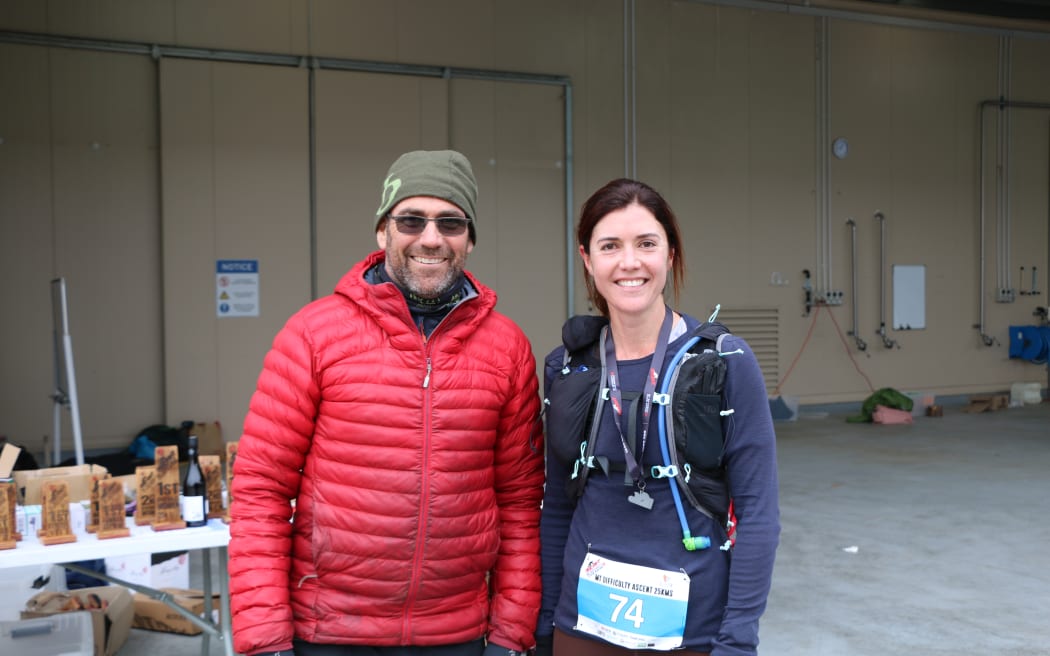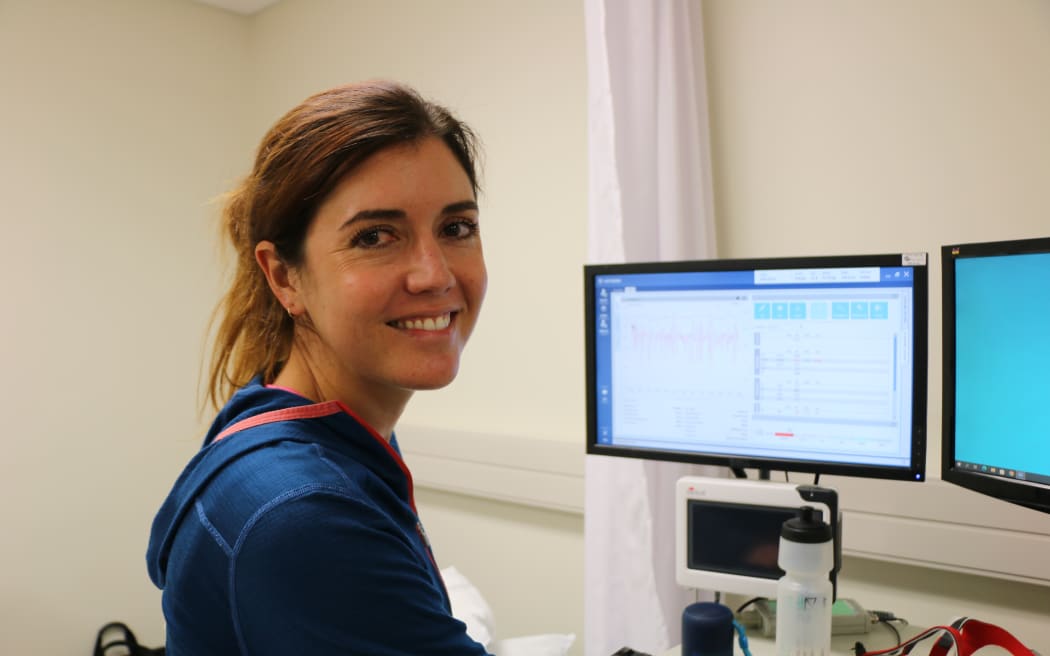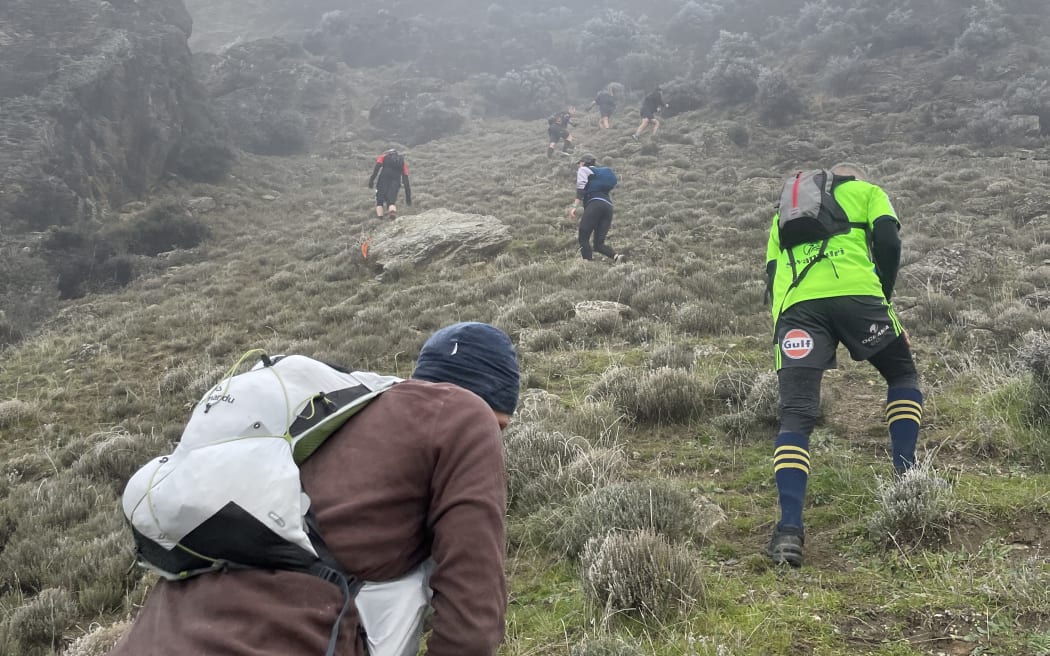Dr Kate Thomas is a self-described “exercise evangelist”. An exercise physiologist, she spends her time researching the impacts exercise has on the body.
But she also practises what she preaches.

Race director Terry Davis with Kate Thomas at the finish line. Photo: Claire Concannon / RNZ
Follow Our Changing World on Apple Podcasts, Spotify, Stitcher, iHeartRADIO, Google Podcasts, RadioPublic or wherever you listen to your podcasts
Based at the University of Otago, Kate is investigating what energy sources the brain uses when you put the body under stress due to exercise and/or fasting. While glucose is the preferred energy source for the brain, it can switch things up if glucose is depleted, and this opens different metabolic pathways and products.
“As we age our brain’s ability to use glucose declines and that's even more the case in neurodegenerative diseases like Alzheimer's,” Kate explains.
“What is important is that the brain can actually use other fuels. And some of these for example are ketone bodies produced during fasting and lactate produced during high intensity exercise.
“One of the theories and what we're trying to explore in this study is whether if we provide the brain with alternative substrates, how it chooses to use those and what that does for the brain's environment. We think that by switching the brain away from using glucose as its main fuel to one of those other substrates, ketone bodies or lactate, that that triggers a bunch of pathways in the brain that help promote neuroplasticity, cognitive function and general resilience to stress.”
In particular, Kate is trying to figure out what combination of fasting and exercise might trigger release of a protein called BDNF – brain-derived neurotrophic factor. BDNF plays a role in preserving existing nerve cells and encouraging the growth of new ones. Our levels of BDNF decrease naturally as we age, and in some chronic neurological conditions such as Parkinson’s disease.

Dr Kate Thomas monitors data during an exercise experiment. Photo: Claire Concannon / RNZ
Study participants are asked to do a series of four trials – the hardest of which involves a three-hour cycle and a three day fast – while Kate monitors effort, blood glucose, products of metabolism and cognitive ability. In this mechanistic study, Kate is “pulling the levers” as she terms it, to figure out which conditions promote greater production of BDNF.
“I think there's more going on around being in the state of starvation or exercise or stress of exercise that triggers all these different pathways that leads to the brain being more resilient as opposed to just providing it with ketones and still having glucose freely available in the blood.”
When not in the lab asking others to exercise for science – or participating in the trials herself - Kate spends her spare time running. She’s aware of the benefits, but she also enjoys the challenge. Over time she has increased the distance that she runs, now tackling ultramarathons. She’s completed races up to 50 kilometres in length.

The course is known for its steep hills. Photo: Kate Thomas
Her running buddy, Dr Joe Donnelly of the University of Auckland, also runs ultramarathons, and also researches the physiology of the body and brain under stress.
Listen to the episode to hear more about Kate's research, and to join her and Joe on their latest running challenge: the Mount Difficulty Ascent.
To learn more:
- We spoke to Dr Katie Schofield about what happens when athletes consistently don’t take in the right number of calories in Running low on energy.
- As Dr Kate Thomas mentions, thermoregulation is important as we exercise – learn all about how sweating helps with this in the 2017 episode ‘The Science of…. Sweat’
- Exercise is good for us at all stages of life, and even a little bit might help us as we age.


